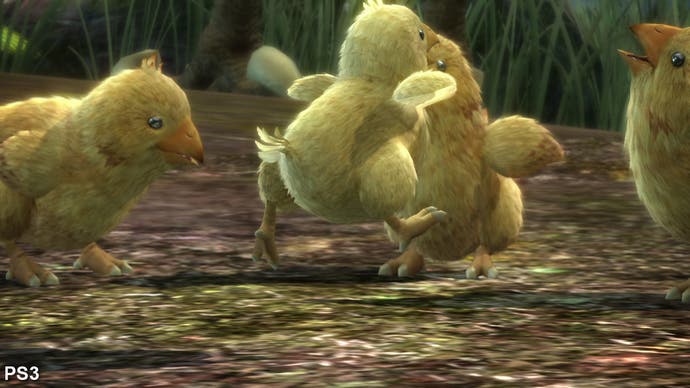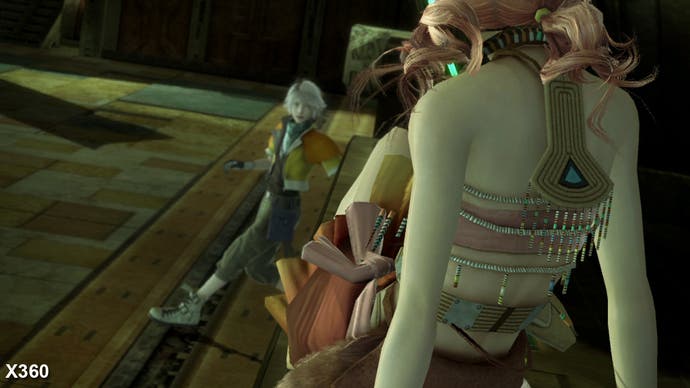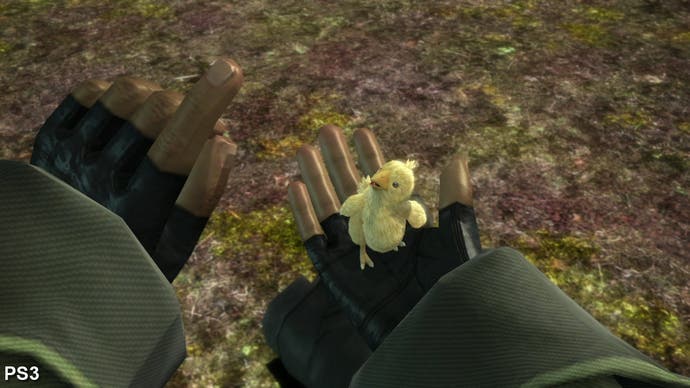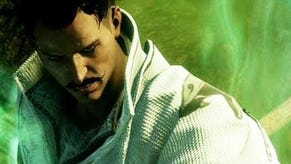Final Fantasy XIII: Endgame
Digital Foundry vs. FFXIII. The final analysis.
Final Fantasy XIII on PlayStation 3 and Xbox 360 was one of the biggest Face-Offs we've produced, but more than that it was an analysis of one of the biggest games - in terms of actual scope - that we've ever had to cover. In putting together the original piece, we were about a week ahead of the release: enough to do the game justice in terms of the comparison coverage, but not enough to see the whole game through to its conclusion, let alone on both platforms.
Over a month on, we're now ready to cover the entirety of the game, reporting additional technical differences we didn't in our original piece, while at the same time providing new insight and better understanding of the basic logistical challenges that Square Enix undertook in converting the game across to the Xbox 360.
Having now unlocked the entirety of the game on both systems, one thing we'll say right from the off is that none of our original conclusions have been invalidated. The only real modifiers to add to the first Face-Off come down to the consistency of the experience across the entirety of the game.
We talked in the original piece about the sense that the Xbox 360 rendition of FFXIII felt like a rushed conversion. Needless to say, all the additional analysis simply confirms that, if any further proof were really necessary. So yes, PlayStation 3 remains the clear favourite from start to finish, and yes, Xbox 360 players have every right to feel upset over a conversion that is far from what it could, and should, have been.
Readers of the original Face-Off will know that just about the only advantage of the Xbox 360 code came from the frame-rate analyses, whereby performance dips were marginally lower and engine-driven cut-scenes managed to handle higher-poly renditions of multiple characters more effectively. This advantage is actually so small that it's barely perceptible to the human eye, and completely falls by the wayside when you factor in the performance level in two later stages: chapters eight and 11 respectively.
These areas of FFXIII have somewhat unique properties that set them apart from the majority of the game's levels. Much of chapter eight is set within a crowd, pretty much the only time we ever see this sort of thing throughout the entire adventure. PlayStation 3 has some issues in some scenes, but frame-rate plummets throughout the duration of the stage on the Xbox 360 rendition.
It's an annoyance for sure, but at least the linear aspect of this part of the game is such that once it's over, you'll never need to return to it again. Chapter 11, Gran Pulse, is a completely different kettle of fish. Not only is it an important level of the basic quest, it's also the main area from which the game draws its lastability.
Even after the final stage has been defeated, Gran Pulse remains open, offering masses of additional, optional gameplay. We spent more than 20 hours there on our playthrough of the PS3 version and reckon there's probably 15-25 hours of fun to enjoy in total, depending on how quickly and effectively you figure out the fight strategies.
It's fair to say that we didn't spend anything like 20 hours on the Xbox 360 version, and from this performance analysis video you can see why.
While the corridor-style elements are pegged at the usual 30FPS, the openworld gameplay found in Gran Pulse is pretty arduous on Xbox 360. There are horribly uneven frame-rates from start to finish with only limited respite.
The clear suggestion is that what optimisation effort there was concentrated on the more usual FFXIII gameplay in the other levels. These two chapters are indicative of the Crystal Tools engine being challenged with a series of different tasks - a crowd full of detailed NPCs in chapter eight, and a vast, sprawling openworld landscape in Gran Pulse.
Neither of these challenges, taken solus, is much of a big deal in the grander scheme of things when compared to other titles (Gran Pulse is majestic, but in common with much of the game, hardly a massive ask from a technical perspective), but it speaks volumes that the "different" levels are where the game suffers most on Xbox 360.
One element we didn't cover in the original Face-Off concerns the shadowing system employed by FFXIII. On the face of it, when you look at comparison shots like this, the conclusion is self-evident: Xbox 360 has scaled back, or non-existent shadowing.




Our contention is somewhat different. The shadowing system is the same, but with a horrible offset that looks for all the world like a bug. Crazy talk, clearly, but let's try to get a handle on the setup with some exact like-for-like images across the two platforms where we do see shadowing.




It's the same shadow, but on Xbox 360 it's offset, it's deeper. Shadow maps are rendered from the light point of view and re-projected or transformed to the camera space. Differences in resolution or buffer format can throw off the re-projection calculation, so the shadow receiving plane can shift, thus necessitating an offset correction. If the plane is pushed further, the shadows can disappear into an object. If it the plane is pulled back, the entire view might be shadowed.
Chances are that the shadows are the same, but they're simply being remapped incorrectly, pushing their way behind the objects they're supposed to cast from, once again suggesting a flaw in the porting process - the offset may have been introduced by the reduction in resolution from 720p to 1024x576.
If true, there wouldn't be any actual performance increase for adopting this approach making its appearance in the shipped 360 version very bizarre indeed. A more dramatic example of the impact of incorrectly projected shadow-mapping can be seen with the tennis player example early on in this AMD paper on GPU shadow-mapping from GDC 2006.









